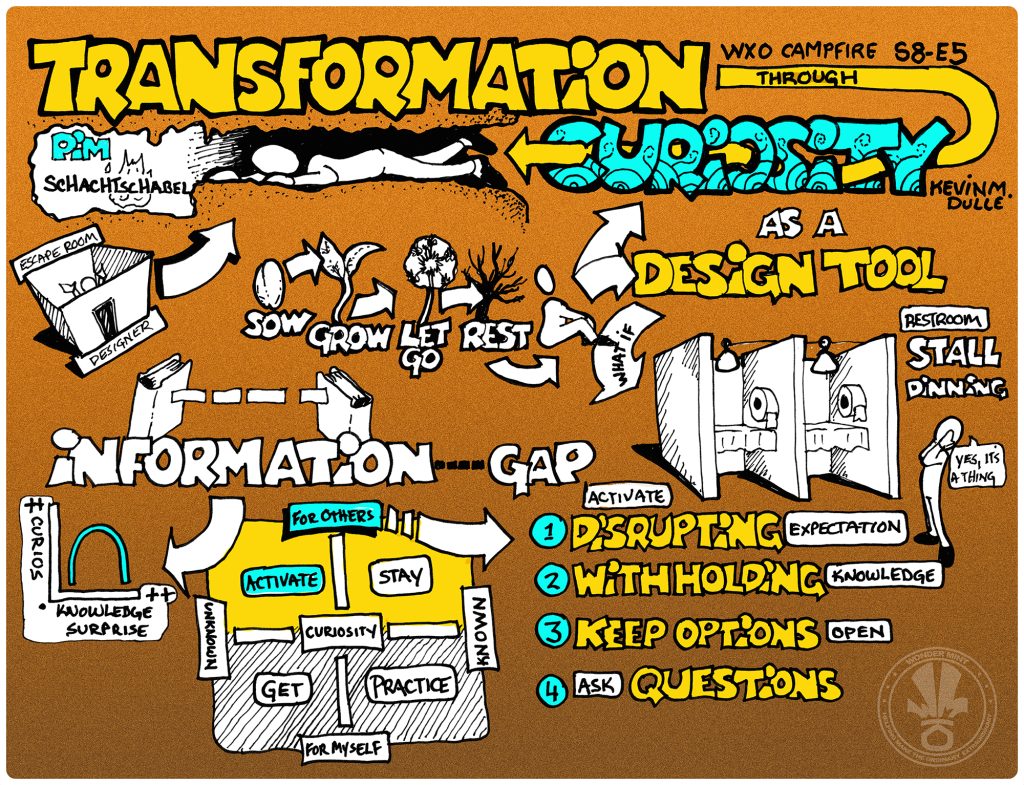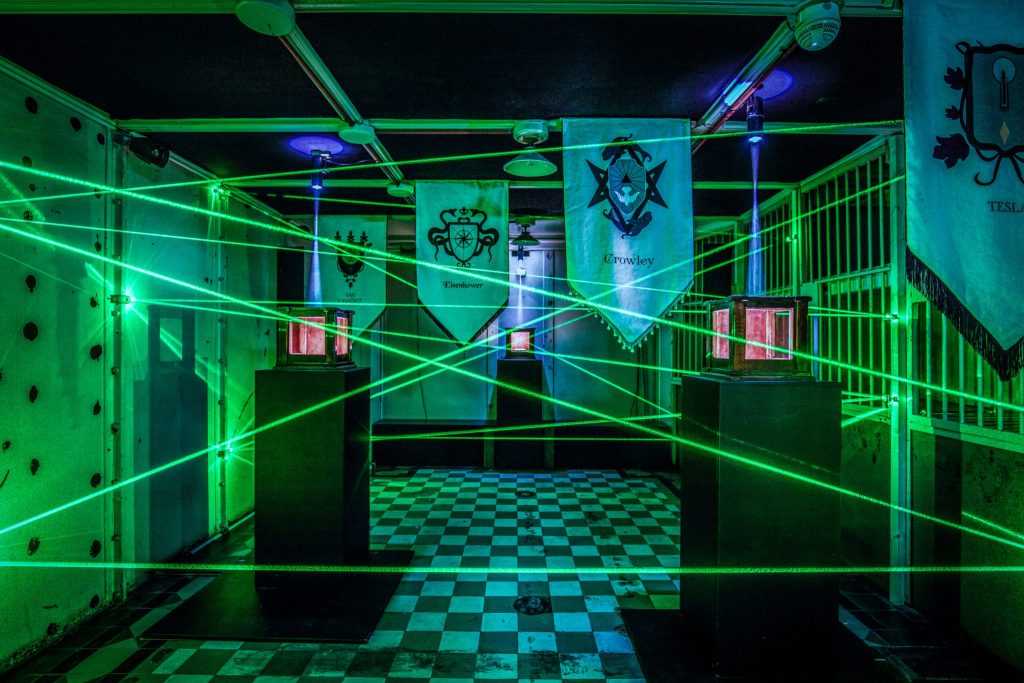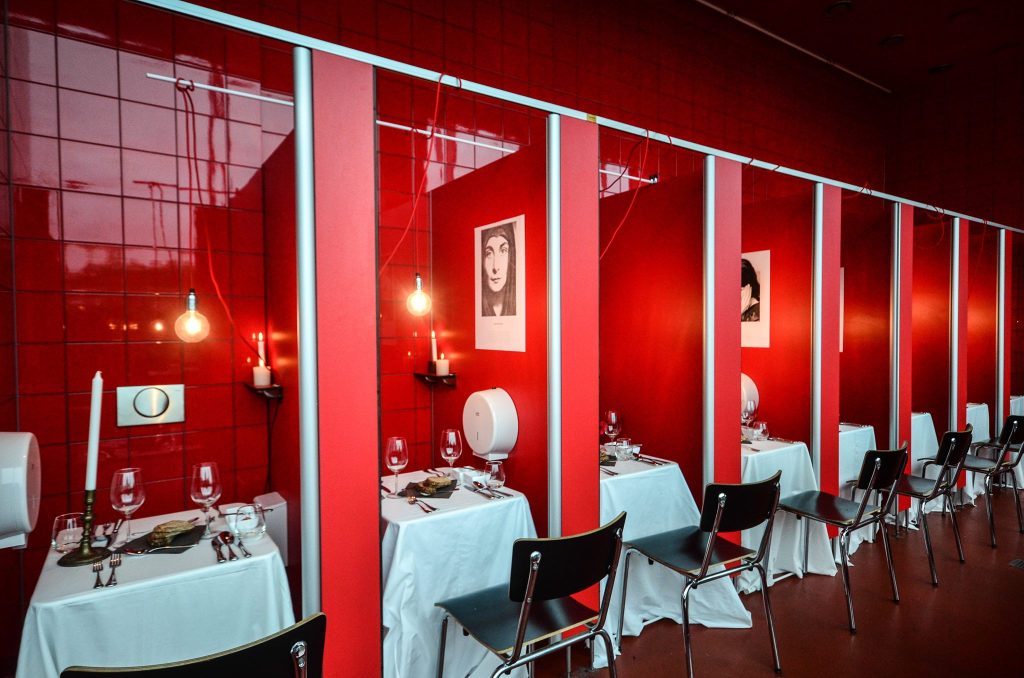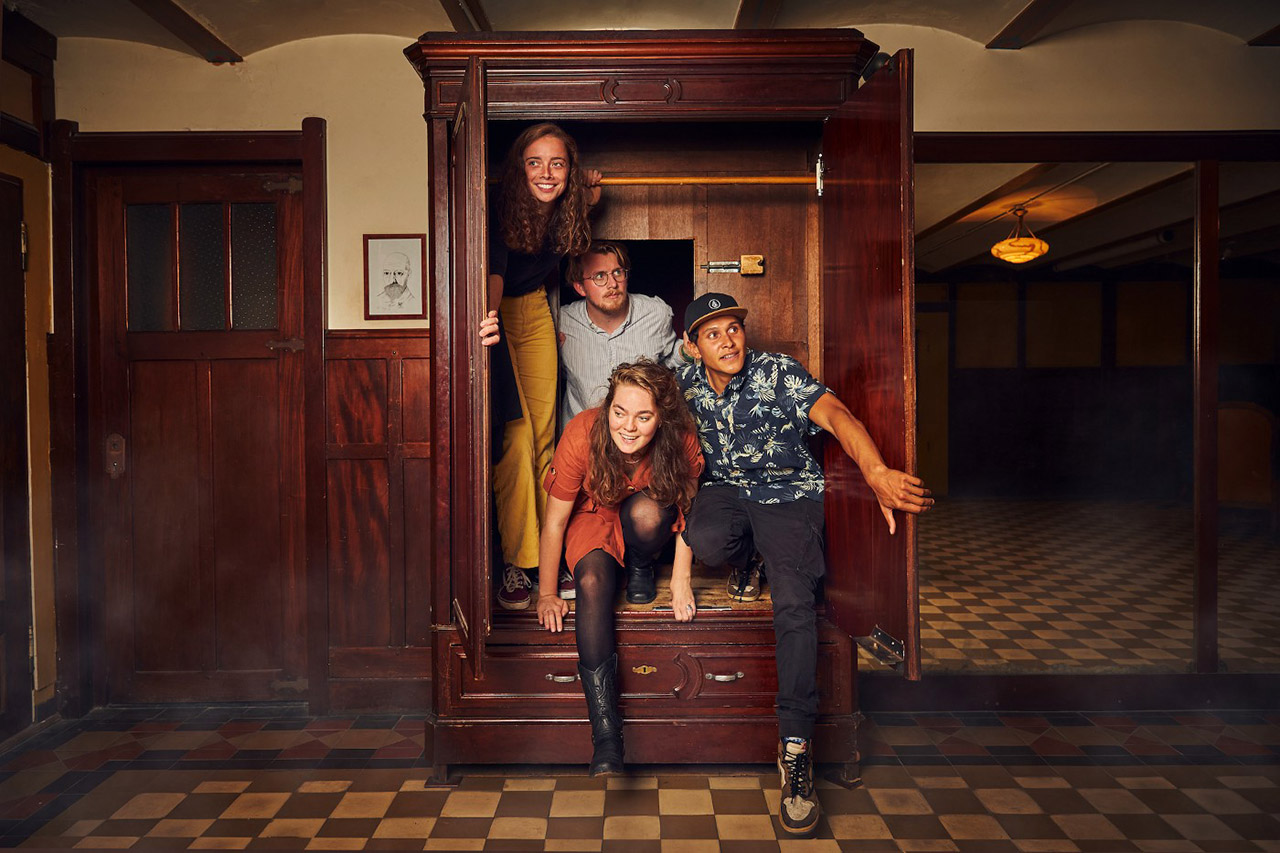Curiosity is at the heart of the human condition. We’re obsessed with stories, and the key question that drives us forward is: what happens next?
So it follows that curiosity is also at the heart of all experience design. For WXO Member Pim Schachtschabel, it’s the red thread that ties together his own life experiences, as well as his work as an architect, escape-room designer, and curiosity coach.

In this Campfire, Schachtschabel draws on his current work as Experience Design Lead at Tellart and past experience as Co-Founder of the escape-room company Sherlocked to reveal how we can not only understand the power of curiosity better, but use it as a design tool in our experiences. Via examples from Tellart, Sherlocked, Stone-Soup, Wilddineren and Wunderman Thompson, you’ll learn:
- The science of why curiosity is so powerful
- The 6 ways to make (& keep) people curious
- How to use curiosity to move people from individual, passive experiences to collective moments of transformation
Ready? Let’s get curious…
The Science Of Curiosity

To better understand why curiosity might be such a powerful experience design tool, we have to turn to science to reveal where it comes from and how it works. Schachtschabel has identified 3 key bits of research that throw some light on the topic:
- Curiosity Is Just Like Hunger
Neuroscience studies have shown that when you satisfy your curiosity, the same parts of your brain light up as when you eat food. When we look at the language we use around curiosity – that we’re “hungry for knowledge”, or want to “sate our curiosity” – it backs up this idea that when we fulfil our curiosity, it’s a similar feeling to great food or sex. This perhaps means that it could be as important to our survival.
- The Information Gap
The American economist George Loewenstein has identified the “information gap”, which shows how our curiosity rises. If we have no knowledge of a topic, we’re not curious about it – but once we start asking questions or getting some knowledge, our curiosity rises. And once we think we know everything there is to know about it, we lose our curiosity altogether. There’s also a correlation with surprise – too little and we’re not interested, and too much and we shut down. (This also reminds us of “gap theory”, as explored in We Are Collider’s MARVELS checklist – that if something is incongruous or doesn’t meet our expectations, it creates a “gap” in our memory networks and a feeling of dissonance that we are motivated to solve.)
- Embodiment: Your Curiosity Hack
Curiosity has a distinct sound – “hmmm…” “aha!”. It also affects our body language – when we’re feeling curious or our curiosity is sated, our shoulders are dropped and we enter a bodily state of curiosity that’s more open and calm. We might therefore be able to “hack” our curiosity by mimicking these sounds and bodily states when we want to access this state of mind. (For more on how to use embodiment in your experiences, check out Katherine Templar-Lewis’s work on neuroaesthetics.)
The 6 Ways To Make (& Keep) People Curious

There’s a big difference between getting curious ourselves, and designing it for someone else.
In our own lives, we might practise curiosity in the way we design our lives – by learning new skills, creating adventures for ourselves, and dreaming beyond what is possible.
When it comes to activating it in others, we need to create a story hook and draw their attention. And to maintain it, we need to help them reach a flow state and offer them a sense of completion. Schachtschabel offers these 6 key ways to activate and maintain curiosity in your guests:
1) Disrupt Expectations. This principle is about making the familiar unfamiliar – but not to the point where it becomes overwhelming and people shut down. In a Wild Dining experience Schachtschabel created to redefine dining, they took the familiar location of a train but made it unfamiliar by turning it into a location for a dining experience. They then pushed this even further by putting the dining tables in the toilets.
We can see an example of disrupting expectation on a grander scale in the city of Bogota, Colombia, where the government hired 50 mime actors to go onto the streets to teach people about traffic rules, with the result that people behaved much better than before.
2) Withhold Knowledge. A book is a classic example of withholding knowledge: we must turn the pages to access what it contains. But in experiences, we also need to think about how to hook people into a story.
When designing the escape room The Architect, Schachtschabel and his team created a story around a secret room being discovered in a historic building belonging to a Freemason, challenging participants to discover and decode its secrets. And this ad by Volkswagen both disrupts our expectations about the role each character plays, and shows how they are all withholding information from each other.
3) Keep Options Open. In the Stone Soup Experience Design Camp, there’s a flexible hierarchy where anyone is invited to take the lead at any time. This means that participants never quite knew what was going to happen, stimulating the information gap.
4) Ask A Question. When designing an ad for Google, Schachtschabel played with a question that stimulated people’s curiosity: haven’t you always wondered what happened behind the doors of Google? And this Pepsi ad riffs off the idea that you should always ask yourself: is this real or am I being lied to?
5) Prevent Overload. If we’re given too much information or a task is too difficult to complete, we shut down. But by providing information in stages, we can maintain people’s curiosity.
When designing the escape-room game The Vaults, a door locking system initially proved too complicated to decode in the time limit. To counter this, Schachtschabel created an app that people could download in advance to train them in a mechanic that they could apply in the actual room. Unboxing an Apple product works in the same way: it’s designed so that you consider each piece of equipment slowly and separately, rather than being overwhelmed all at once.
6) Prevent Boredom. On the other hand, if we’re not given enough information, we can lose interest in an experience.
In Wild Dining, once you’d got over the initial surprise and impact of dining in a train toilet, it could have become just a normal dining experience. But by providing printed maps showing that you’d eat in 3-4 different locations over the course of the meal, participants were always excited to take the next step and meet other people there. Schachtschabel also designed the experience so that you were always progressing with a buddy, safeguarding the moment of progression. Small innovations like putting a clear window in an oven so we can see when our food is ready, or adding a tracking map to Uber or Royal Mail, appeal to the same instinct.
The WXO Take-Out
As Joseph Campbell says:
“If you follow your curiosity, doors will open where there were no doors before.”
Joseph Campbell
Curiosity is part of what grabs and holds our focus and motivates us to progress. In an attention economy, it’s therefore a valuable tool that we should be capitalising on as we design our experiences.
So next time you’re designing an experience, ask yourself:
- How might you disrupt people’s expectations?
- How might you create a curiosity gap?
- How might you both prevent information overload, and also prevent boredom?
And if you’d like to beat uncertainty and sharpen your own curiosity, Schachtschabel has designed a course to help you do just that – more details here.
Want to come to live Campfires and join fellow expert experience creators from 39+ different countries as we lead the Experience Revolution forward? Find out more here.





